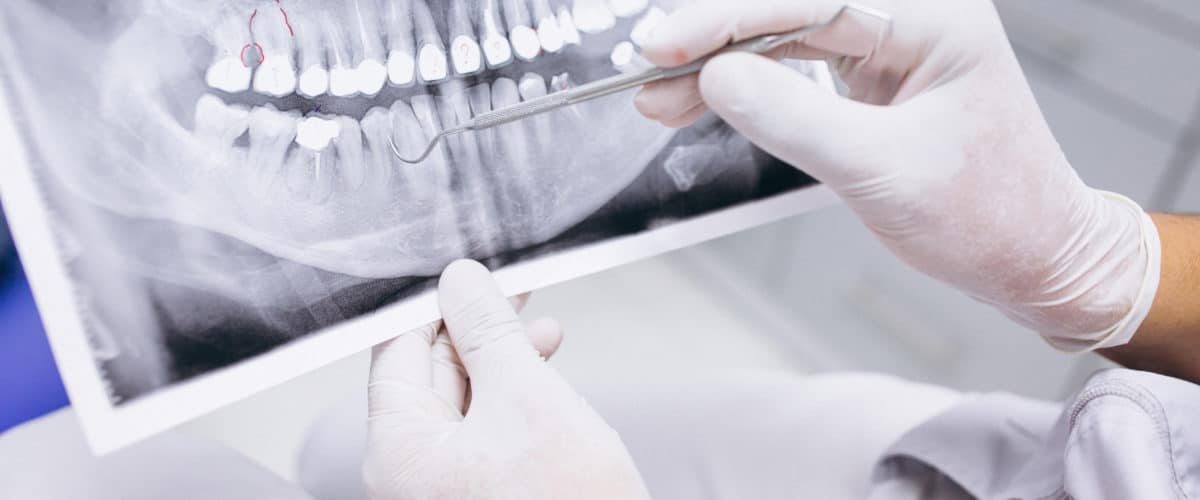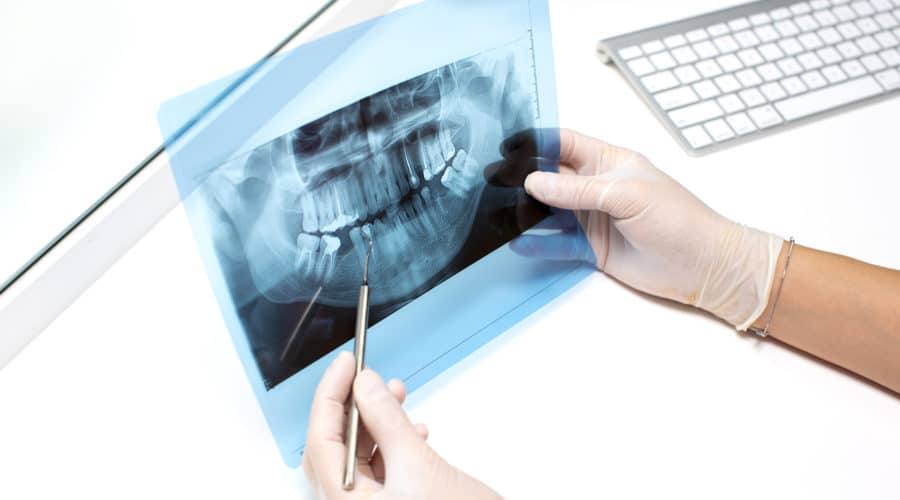A picture is worth 1000 words…so what is an x-ray worth? X-rays are taken to show valuable information about a patients dental status. Dentists can only get some of the information they need by simply taking a look in your mouth. There is so much diagnostic information that x-rays can tell us.
For example, radiographs (the image/picture that results from x-ray exposure) can show faulty cosmetic crowns or cracked fillings. They can show tooth infections, maybe even before a patient starts to get symptoms and further damage to the tooth is done.
They show new cavities, and cavities that are around or underneath existing cosmetic ceramic crowns, porcelain veneers, or amalgam or resin fillings. They also help to determine whether periodontal disease is present, and the health of the bone holding the teeth in position.
They are used to detect dental anomalies such as tumors in the jaw bones. Radiographs are used to aid the general dentist and specialists in performing restorative procedures, such as placing fillings and crowns, performing root canal therapy, and extracting wisdom teeth.
Just as any surgeon would take an x-ray of the area before performing surgery, so do dental specialists, to make sure they make the correct diagnosis and perform the proper procedure to restore dental health.
The amount of radiation needed to get a clear and diagnostic radiograph is very minimal when using digital technology. Digital x-rays have a significantly less amount of radiation compared with the old standard x-ray technology. Do you remember the days before digital cameras?
When we had the rolls of 200 speed film and had to take it to the store to get developed? That was also how the old standard x-ray technology worked. Those sharp cardboard films that would dig into your mouth when you bit down had film inside. That film required more radiation to expose the image of teeth onto the film.
Digital sensors today don’t have those sharp corners, and are more comfortable to bite down on. But most importantly, the digital sensor is so sensitive that it doesn’t require much radiation to get a clear image. In fact, the amount of radiation a person gets from dental x-rays is equivalent to flying in a plane for 2 hours.


